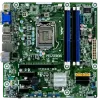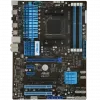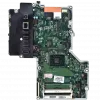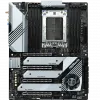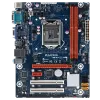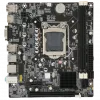Serial ATA International Organization (SATA-IO) presented the draft specification of SATA 6 Gbit/s physical layer in July 2008, and ratified its physical layer specification on August 18, 2008. The full 3.0 standard was released on May 27, 2009.
Third-generation SATA interfaces run with a native transfer rate of 6.0 Gbit/s; taking 8b/10b encoding into account, the maximum uncoded transfer rate is 4.8 Gbit/s (600 MB/s). The theoretical burst throughput of SATA 6.0 Gbit/s is double that of SATA revision 2.0. It is backward compatible with SATA 3 Gbit/s.
The SATA 3.0 specification contains the following changes:
- 6 Gbit/s for scalable performance
- Continued compatibility with SAS, including SAS 6 Gbit/s. "A SAS domain may support attachment to and control of unmodified SATA devices connected directly into the SAS domain using the Serial ATA Tunneled Protocol (STP)", as stated in the SATA Revision 3.0 Gold specification.
- Isochronous Native Command Queuing (NCQ) streaming command to enable isochronous quality of service data transfers for streaming digital content applications
- An NCQ Management feature that helps optimize performance by enabling host processing and management of outstanding NCQ commands
- Improved power management capabilities
- A small low insertion force (LIF) connector for more compact 1.8-inch storage devices
- A connector designed to accommodate 7 mm optical disk drives (in addition to the existing 12.7 mm and 9.5 mm drive profiles)
- Alignment with the INCITS ATA8-ACS standard
In general, the enhancements are aimed at improving quality of service for video streaming and high-priority interrupts. In addition, the standard continues to support distances up to one meter. The newer speeds may require higher power consumption for supporting chips, though improved process technologies and power management techniques may mitigate this. The later specification can use existing SATA cables and connectors, though it was reported in 2008 that some OEMs were expected to upgrade host connectors for the higher speeds.


